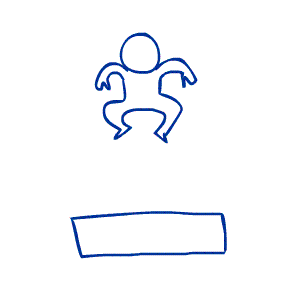I was first inspired by Lars Doucet's wonderful contribution of the phrase "Procedural Death Labyrinth" in 2013. It was suggested as a better-suited descriptive term than Roguelike (or even Roguelike-like) to talk about a specific type of game genre. The game design community at large looked at what he had to say, looked to each other, and collectively agreed to adopt PDL into their vocabulary.
I started to think about other words that the community might have a need for, or other useful phrases that specific developers or designers have come up with which have not circulated enough to catch on. I'm hardly what one would call an authority on the subject; at best I'd like to be a bit of a curator of the fascinating and practical sorts of sayings I occasionally stumble upon. In the unlikely even that lots of people see this tiny labor of love, maybe it can be of use to them. I would like that very much.
Juice
In 2005, four grad students by the name of Kyle Gray, Kyle Gabler, Matt Kucic, and Shalin Shodhan wrote a Gamasutra article called "How to Prototype a Game in Under 7 Days", exploring the unconventional and sometimes even controversial lessons the group learned as they made prototypes for the Experimental Gameplay Project. Among other topics covered in the article, one was a new term the group used to refer to a particular kind of game feel that had to do with user feedback. Juice.

What does it mean?
from page 3 of the article:
“Juice” was our wet little term for constant and bountiful user feedback. A juicy game element will bounce and wiggle and squirt and make a little noise when you touch it. A juicy game feels alive and responds to everything you do – tons of cascading action and response for minimal user input. It makes the player feel powerful and in control of the world, and it coaches them through the rules of the game by constantly letting them know on a per-interaction basis how they are doing.See also:
Some juicy examples you may have experienced might include:
- Alien Hominid – enemies exploding and flinging blood to an almost unjustified extent
- Mario Bros. – bouncing through a room full of coins, blinging with satisfaction
- Pachinko - a never-ending gush of balls all under your control
- Super Puzzle Fighter II Turbo – animation and sprites abound on multiple chains
"Juice" has seen a recent rise in popularity as other game developers have adopted the descriptive term and attempted to explore it in their own ways.
- 's talk, "Juice it or Lose it" is a very popular video which demonstrates the benefit of Juice in a live demo. They later added in another presentation of the same talk the idea that Juice should not be a replacement for good game design, merely a compliment to same.
- I also found a very robust thesis written by a one Simeon Atanasov that studies juiciness in depth in a number of different game genres. I would highly recommend this little gem to anyone who wants to know more.

No comments:
Post a Comment